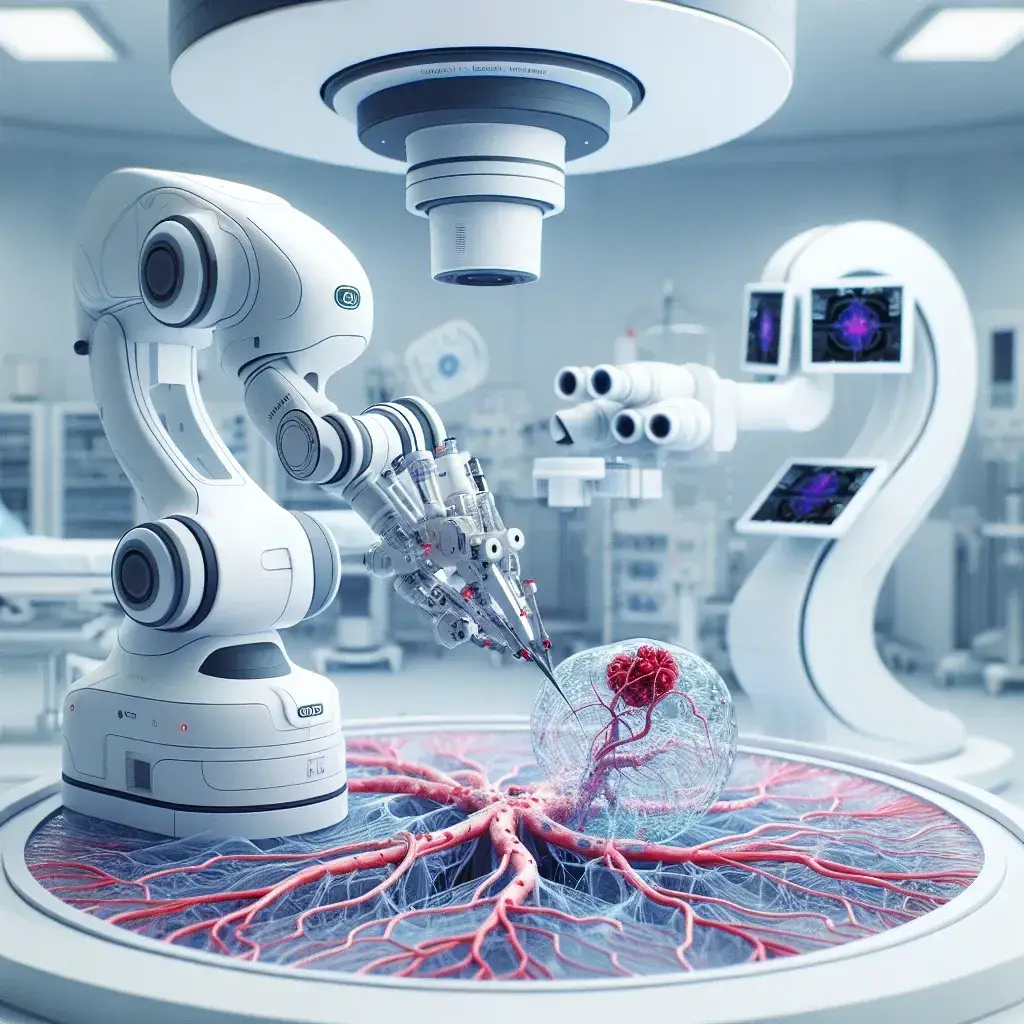Introduction
In the ever-evolving field of medical technology, the emergence of robotic systems has transformed surgical practices. One of the groundbreaking innovations is the micro vascular suturing robot guided by optical coherence tomography (OCT) imaging. This technology represents a significant leap forward in microsurgery, offering enhanced precision and improved patient outcomes. In this article, we will delve into the intricacies of this technology, its historical context, future implications, and its multifaceted benefits and challenges.
Understanding OCT Imaging
Optical coherence tomography (OCT) is an advanced imaging technique that provides high-resolution, cross-sectional images of biological tissues. It is particularly useful in visualizing the microstructure of vascular systems, allowing surgeons to assess the condition of blood vessels and surrounding tissues in real-time. The integration of OCT with robotic systems enhances surgical navigation and precision, making it a valuable tool in microvascular surgeries.
Historical Context
The journey of robotic-assisted surgeries began in the late 20th century. However, it wasn’t until the advent of OCT technology in the 1990s that significant advancements in real-time imaging and surgical guidance were realized. Initially used predominantly in ophthalmology, OCT has since expanded its applications to various fields, including cardiology and oncology. The development of micro vascular suturing robots is a natural progression, marrying robotic precision with advanced imaging capabilities.
The Technology Behind Micro Vascular Suturing Robots
Micro vascular suturing robots are intricately designed systems capable of performing delicate suturing tasks within the intricate environments of blood vessels. The use of OCT imaging in conjunction with these robots allows for:
- Enhanced Visualization: Surgeons receive real-time feedback on the vascular structure, enabling them to make informed decisions during procedures.
- Improved Accuracy: The precision of robotic manipulation reduces the likelihood of suturing errors, which can have significant implications in vascular surgeries.
- Minimally Invasive Options: These robots facilitate procedures that require smaller incisions, resulting in less trauma to the patient.
How It Works
The operation of a micro vascular suturing robot guided by OCT involves several critical steps:
- Preoperative Planning: Surgeons utilize OCT imaging to map out the vascular anatomy before the procedure.
- Real-Time Imaging During Surgery: As the robot operates, OCT provides continuous imaging, allowing for adjustments to be made instantaneously.
- Automated Suturing: The robotic system, equipped with specialized tools, performs suturing in a controlled and precise manner.
Benefits of Micro Vascular Suturing Robots
The introduction of micro vascular suturing robots has led to numerous advantages:
- Increased Surgical Precision: With the assistance of OCT imaging, surgeons can achieve a level of accuracy that is difficult to attain through traditional methods.
- Reduced Surgery Time: The efficiency of robotic systems can lead to shorter surgical procedures, benefiting both patients and medical facilities.
- Lower Risk of Complications: Enhanced visualization and precision contribute to a decrease in postoperative complications.
- Improved Patient Outcomes: Faster recovery times and fewer complications ultimately lead to better overall outcomes for patients.
Challenges and Limitations
Despite the numerous benefits, the technology is not without its challenges:
- Cost Considerations: The development and maintenance of robotic systems can be expensive, limiting accessibility for some healthcare providers.
- Training Requirements: Surgeons must undergo extensive training to operate these sophisticated systems effectively.
- Technical Limitations: The performance of these systems can be affected by the complexity of the surgical procedure and the condition of the patient’s tissues.
Future Prospects
The future of micro vascular suturing robots guided by OCT imaging appears promising. As technology continues to advance, we can expect:
- Integration with AI: The incorporation of artificial intelligence could further enhance the capabilities of these robots, allowing for predictive analytics and improved decision-making.
- Wider Adoption: As costs decrease and training programs develop, more healthcare facilities may adopt these robotic systems, improving access to advanced surgical techniques.
- Enhanced Interoperability: Future systems may integrate seamlessly with other medical technologies, providing a more comprehensive surgical experience.
Conclusion
The micro vascular suturing robot guided by OCT imaging marks a significant advancement in the field of surgery. By merging the precision of robotic systems with the clarity of OCT imaging, surgeons can perform intricate procedures with improved accuracy and efficiency. While challenges remain, the potential for enhanced patient outcomes and the evolution of surgical practices is undeniable. As technology progresses, we can look forward to a future where these advancements will become integral to surgical methodologies, ultimately revolutionizing patient care in the realm of vascular surgery.

